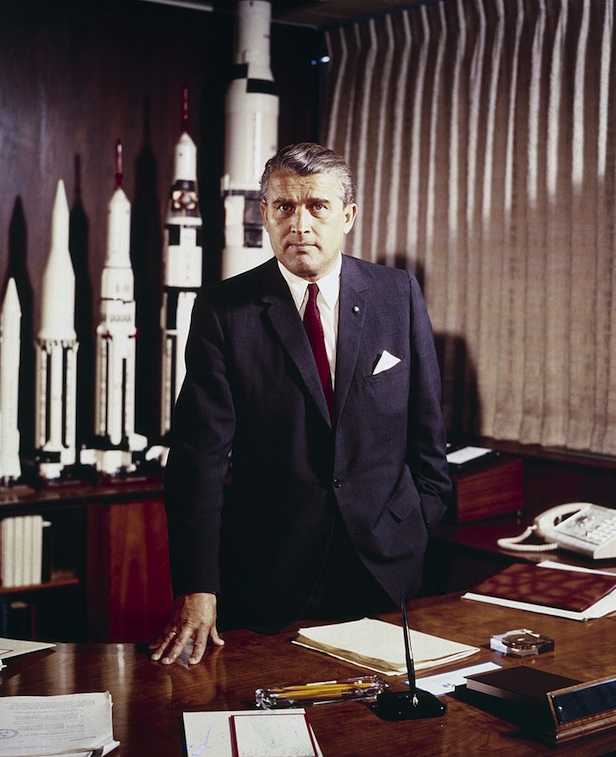Heroes Of Space: Wernher von Braun
How the ‘Father of Rocket Science’ went from working for the Nazis to becoming an American space hero
Von Braun is a man who splits opinion, to say the least. Having helped the Nazis develop the V-2 missile in World War II that was responsible for thousands of deaths, he went on to become a pivotal figure in America’s space programme – without him the manned missions to the Moon would likely not have been possible.
Some are willing to forgive him for his role in the war, a role he claimed he took only because of his love for science, while others are less well inclined. Whichever side of the fence you sit on, it’s hard to deny that von Braun was one of the most important figures in rocketry in the 20th Century.
Wernher von Braun was born on 23 March 1912 in the town of Wirsitz, then part of the German Empire. He was part of an aristocratic family, with his father serving as Minister of Agriculture during the Weimar Republic and his mother having ancestry across Europe. His mother gave him a telescope at a young age, which inspired his passion for astronomy, while his love of rocketry was apparent from the age of 12 when he accidentally blew up a firework-powered toy car in a crowded street.
At the end of World War I, when Wirsitz was renamed Wyrzysk and became part of Poland, von Braun and his family moved to Germany and it was at school in Weimar, and later the island of Spiekeroog, that von Braun took up physics and mathematics to learn more about rocket engineering. In 1932, he graduated from the Berlin Institute of Technology with a degree in aeronautical engineering, and two years later he had a PhD in physics from the Frederick William University.
While studying for his PhD von Braun had begun working as a rocket engineer for the German army. He became integral to the army and, during the Thirties, von Braun and his team successfully built and launched rockets that flew a few kilometres high. By 1944 the German army had a working V-2 rocket, which they used to devastating effect against the Allies.
Around this time von Braun realised that Germany would not win the war, and began making procedures to transfer to the US. In a daring escape in 1945, von Braun led his team from the German rocket facility at Peenemünde to American forces and duly surrendered.
Von Braun and his team were taken to the US in what was known as Project Paperclip. He was employed by the US Army for 15 years developing ballistic missiles, but in 1960 he transferred to the newly created National Aeronautics and Space Administration (NASA). He was tasked first with developing the unmanned Mercury-Redstone programme before starting work on the development of the Saturn rockets. After the successful manned Mercury and Gemini projects, von Braun’s dream of seeing man walk on the Moon was realised when, launching atop his Saturn V rocket, the crew of Apollo 11 ventured to the lunar surface in July 1969.
Von Braun retired from NASA in 1972 at the culmination of the Apollo programme, joining the aerospace company Fairchild Industries in Maryland. A few years later he helped establish the National Space Institute (now the National Space Society), before being diagnosed with cancer and passing away on 16 June 1977 at the age of 65. Von Braun’s legacy continues to cause controversy to this day, and though he always insisted he was not a Nazi sympathiser there are some who do not forgive him for his actions during the war.
Nonetheless, his work in helping America land on the Moon was undoubtedly pivotal for the success of the Apollo missions, and it is for this reason he is revered by many for his work in comparatively peaceful rocket endeavours.
Keep up to date with the latest news in All About Space – available every month for just £4.99. Alternatively you can subscribe here for a fraction of the price!





